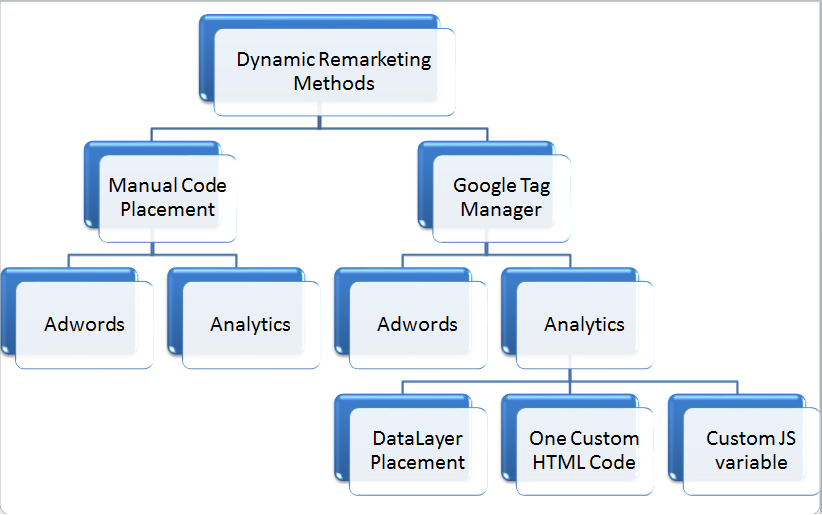Taking Advantage Of Remarketing in Google Analytics: A Comprehensive Overview
Utilizing remarketing in Google Analytics offers businesses a calculated side in getting to out to possible clients. This guide will certainly lose light on the important actions entailed in utilizing the full possibility of remarketing in Google Analytics, leading to boosted advertising and marketing results.
Understanding Remarketing in Google Analytics
Remarketing in Google Analytics allows services to strategically target users that have previously engaged with their web site or mobile application. By leveraging data from Google Analytics, organizations can produce tailored remarketing checklists based on individual actions, such as web pages seen, actions taken, or particular objectives achieved. This effective tool makes it possible for services to re-engage with customers that have shown interest in their service or products, ultimately increasing the chance of conversion.
Comprehending the different types of remarketing techniques is vital for a successful project - What Is “Remarketing” In Google Analytics?. Google Analytics provides numerous choices, consisting of standard remarketing, vibrant remarketing, and remarketing checklists for search ads (RLSA) Each kind serves a special objective and can be tailored to meet specific advertising goals
Additionally, evaluating the efficiency of remarketing projects is crucial for enhancing outcomes. Google Analytics gives valuable insights right into the effectiveness of different remarketing techniques, permitting companies to make data-driven decisions and improve their targeting approach. By constantly monitoring and adjusting remarketing efforts based on analytics information, companies can make the most of ROI and drive success in their advertising initiatives.
Establishing Remarketing Projects

After establishing target market lists, the next action is to connect Google Analytics with Google Advertisements. By connecting these 2 systems, services can perfectly move audience checklists from Google Analytics to Google Ads for remarketing purposes. This assimilation permits more specific targeting and much better campaign efficiency.
As soon as the accounts are connected, businesses can develop remarketing projects in Google Ads utilizing the audience notes formerly specified in Google Analytics. These projects can be personalized with certain ad creatives, messaging, and bidding techniques to successfully re-engage with previous visitors and drive conversions. By complying with these actions, businesses can take advantage of the power of remarketing to enhance their marketing initiatives and raise ROI.
Utilizing Target Market Segmentation Approaches

Predefined segments in Google Analytics permit you to promptly examine usual audience classifications like new individuals, returning users, or customers that finished a details goal on your site. Customized sectors, on the various other hand, enable you to produce unique segments based on certain requirements that are crucial to your business objectives. Dynamic remarketing checklists immediately change based on individual behavior, showing personalized advertisements to individuals that have actually engaged with your site specifically means.
Analyzing Remarketing Efficiency Metrics
Upon evaluating the efficiency of remarketing projects in Google Analytics, the evaluation of key performance metrics Recommended Site gives important understandings into target market engagement and conversion prices. By delving into metrics such as click-through prices (CTR), conversion prices, check cost per purchase (CPA), and return on advertisement spend (ROAS), marketing professionals can assess the success of their remarketing initiatives. Analyzing these metrics makes it possible for marketing professionals to maximize projects, refine audience targeting, and allot budgets effectively to boost overall remarketing efficiency.
Enhancing Remarketing Approaches
When refining remarketing approaches in Google Analytics, focusing on target market division is extremely important for attaining campaign success. By dividing your target market right into specific sections based on their habits, demographics, or interests, you can customize your advertisements a lot more properly to every group. This targeted approach increases the possibility of involving individuals that have currently shown interest in your services or products, bring about greater conversion rates.
One more important facet of optimizing remarketing techniques is continuously screening and refining your projects (What Is “Remarketing” In Google Analytics?). A/B screening different ad creatives, messaging, or offers can assist you determine what resonates finest with your audience and drives one of the most conversions. By examining the performance of these examinations in Google Analytics, you can make data-driven decisions to enhance your remarketing initiatives further
Additionally, leveraging dynamic remarketing can substantially enhance your project results. This function permits you to show personalized advertisements to individuals based upon their previous communications with your internet site, showcasing products or solutions they have formerly seen. By providing tailored web content to individuals based on their passions and behaviors, dynamic remarketing can help enhance involvement and drive conversions.
Conclusion
Finally, harnessing remarketing in Google visit our website Analytics is a strategic technique to target individuals that have actually previously involved with an internet site. By creating customized audience checklists and using audience division techniques, businesses can enhance remarketing advocate enhanced conversion rates. Examining efficiency metrics and constantly maximizing approaches are essential for making best use of the performance of remarketing initiatives.
Google Analytics supplies different alternatives, including typical remarketing, dynamic remarketing, and remarketing listings for search advertisements (RLSA)After setting up target market lists, the following step is to connect Google Analytics with Google Ads. By connecting these two platforms, businesses can seamlessly transfer target market checklists from Google Analytics to Google Advertisements for remarketing objectives.When the accounts are connected, companies can develop remarketing campaigns in Google Ads utilizing the audience details formerly defined in Google Analytics.When refining remarketing techniques in Google Analytics, concentrating on audience segmentation is vital for achieving campaign success.
Comments on “Just How to Leverage Remarketing In Google Analytics for Your Organization”